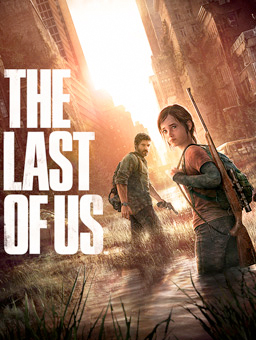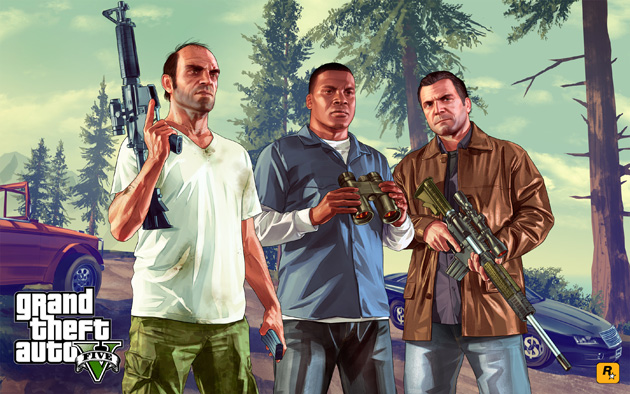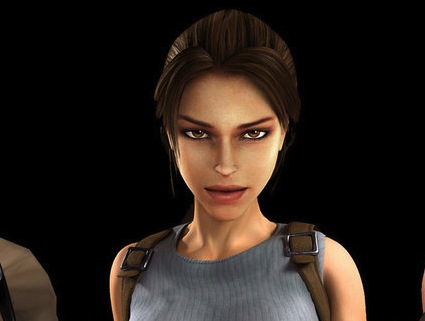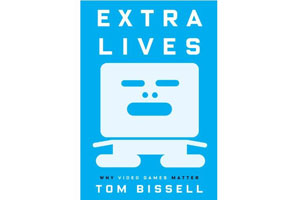Gone Home begins with Katie Greenbriar arriving at her family’s new house during a thunderstorm in the dead of night. After reading a foreboding note from her little sister Sam taped to the door, Katie enters to find only flickering lights, creepy hallways, and mementos from her mysteriously absent family strewn about.
Anyone who has played more than a few video games can be excused for assuming this is all a prelude to Katie finding her dad’s shotgun and fending off hordes of the undead. Gone Home has no combat, however—your only mission is to explore the house and piece together your family’s story based on letters, ticket stubs, and plenty of other objects they left behind. As you hunt through every room, Sam’s audio diaries guide you through a riot grrrl-soundtracked story of high school, sexuality, and romance.
In an industry full of big budget shooters, Gone Home’s eschewal of violence to focus on exploration and storytelling has brought near-universal critical acclaim since its August 15 release. It’s the first game from The Fullbright Company, a studio founded last year by former developers of some of the award-winning BioShock games, genre-bending shooters that garnered plenty of praise for their own storytelling. Cofounder Steve Gaynor spoke with Mother Jones about moving away from major studio work, taking storytelling and gameplay risks, and why he finds the current state of the video game industry to be so inspiring. **Gone Home spoilers will follow.**
MJ: You worked on BioShock Infinite before Gone Home. What was it like moving from a big studio to an office in your Portland basement?
SG: It was an interesting set of transitions because I worked on BioShock 2 and it was like 80 or 100 people working on it, then I was the lead of the Minerva’s Den DLC and that was 12 people that were on it full-time within this big organization. It felt like a very small project and we had a lot of control over it. It was a good experience. Going back to a giant team on a massive production like Infinite was—I don’t know, I spent a year in Boston, and by the end of that I felt like it wasn’t a project for me. It wasn’t the size of the game that I wanted to be working on. Really I wanted to get back to that smaller game feeling.
MJ: How did you guys come up with Gone Home’s storyline?
SG: Coming off of BioShock stuff, the part that really inspired us about those games was the sense of exploration—going around a first-person environment, finding the story in the environment, and putting together the story of the place as you go. Unlike most games, where those aspects are kind of a sideshow, we wanted the whole game to be that… We knew it had to be a small place that would be dense with evidence you can find, so we settled on a house. And it’s a story of the family that lives in the house. Going from there, our creative decisions came from that kind of practical problem solving, you know, there should be drama between the parents and the teenage kid, and what form does that take, and who are these people and how do the conflicts resolve between them in an interpersonal way. In so many games, the conflict is resolved by ‘this guy kills this other guy’ or something. So our challenge was, if we have the teenager and the parents and they don’t see eye to eye, how does the resolution of their story remain interesting just by finding the stuff they had left behind?
MJ: Maybe it’s just the games that I play, but it seems so hard to find a game with everyday female main characters, not to mention gay characters. Gone Home also dives into a lot of territory—gender, sexuality, coming of age—that your stereotypical video game doesn’t cover. Is it nice to take a game and switch things up?
SG: It is. Really, it was a process of us taking opportunities that presented themselves with the game we were making. We decided early on there weren’t going to be any puzzles, and there won’t be any combat. The whole game is just about exploring a place and the reason the player is playing is not to beat challenges but because of natural curiosity and their desire to find everything and find out what happens next. So we said, “We can make this story about just a normal family, a group of people that live in this house in contemporary America, and there doesn’t also have to be zombies coming out the walls.” At that point we started talking about what the conflict is. And it’s the kid falls in love with somebody the parents don’t approve of. That’s a classic irreconcilable difference. So we thought about what the contemporary version of that is, and at some point I said, “OK, we signed up to write a gay character and write about their experience and make that central to the events of the game. Now we have to commit to that and make that a thing that feels authentic, that the player gets invested in.” It definitely didn’t come from the point of, well we want to do an LGBT story, how do we do that? It was a process of discovering who these characters were and then when we arrived at who they were, how to tell their stories in a way that felt honest.

MJ: There was some controversy at the end of last year when it came out that the developers of The Last Of Us had to fight to keep Ellie, the game’s female main character, in a prominent place on the cover art. Is it easier for a small indie studio to put out games with gay characters and female main characters than it is for major studios looking for a wide audience?
SG: I think that it is, and I think that’s not because of the people making the games generally. Obviously there are people who are trying to push on what kind of people are represented in mainstream games. When you bring up The Last of Us, it’s a good example—Ellie was a great character, and obviously the developers of the game fought hard to get her on the promotional materials and everything. I think the difference is that when you’re working on a game that has a budget of tens of millions of dollars and you have to sell millions and millions and millions of copies to break even, you have a lot more layers between you and the audience. You have a marketing department, and there’s a different marketing department for every continent, and the parent company has stockholders, and all that kind of stuff. You have to get all these approvals and go through all these hoops. I’m really grateful for the fact that we’re working in a time for the industry and in a part of the industry that allows us to make the game we believe in and get it out to people without really any barriers to entry. We can just make the game in our basement and work to get it on [the digital game distribution platform] Steam and get it previewed and reviewed on websites, and the only version of it that people see is the one that we want to put out there.
MJ: You mentioned all the different layers at work on these larger studio games, and plenty of critics have called for more diversity when it comes to character depictions in games. Is it more that the audience only wants a certain type of game or character? Or is it that your marketers or shareholders are scared to put out a game that doesn’t have a nameless space marine in the middle of it?
SG: I think there are a lot of different factors there. A game that a lot of critics like is not necessarily a game that enough players like to be able to make back an investment of tens of millions of dollars. So I understand the concern that you have to have when you’re working on something really big. I think that the good thing about working smaller and being a smaller company that doesn’t have to make as much to make money back is that you don’t have to worry about, well, critics like this and they’ll tell people to buy it, but millions of people might say, ‘Oh, well I’m not interested in that subject matter’ and we’re sunk. There are enough tools now…stuff like Steam and Twitter that allow people to tell their friends about games that they might be interested in, that let us say we don’t want to make something that will sell 3 million copies at Wal-Mart. We want to make something that would sell 50,000 copies online. I think that’s a really inspiring place for the industry to be right now.
MJ: Sam’s riot grrrl tapes are scattered around the house, and you can listen to them as you explore. Tell me about getting Bratmobile and Heavens To Betsy on the soundtrack.
SG: We started working on that early, which is good because it took a long time. We’re a small studio and we don’t have any clout, we don’t have a track record really, so it was a long drawn-out process of negotiating for the rights to use those songs. Early on, when we knew who Sam and Lonnie were, and we knew the time period was the mid-90s, we knew this would be the perfect music for what these characters are going through. Kill Rock Stars is a local label. They’re here in Portland. We actually had to work with their licensing agency in New York, but early on, we knew they were a local company and this is music from the Pacific Northwest, and it’s obscure enough that we might be able to afford it. We were really excited to get that in because I think it adds a lot to the feeling of the game and what the characters are going through.
MJ: All of Gone Home takes place inside a single house. What was the challenge gameplay-wise of fitting everything into this small setting?
SG: On some level, the biggest challenge and the thing I’m happiest about as far as telling a story about people is that, well, there are no people in the game. I’m glad that we didn’t do that because that just introduces its own challenges from both a development and an aesthetic standpoint. But also it was the one constraint that we had—Mom went and did this thing outside of the house, so how do you know that happened? Well maybe she brings the ticket stub home, and you can find the note inviting her out and all that kind of stuff. It was a fun challenge, and it played to our strengths because there was a lot of writing in the game and a lot of really nice 2-D art. Karla, one of our cofounders, is a really great 2-D artist and just a Photoshop wizard. A document forger, really. It allowed us to say we’ll focus on these 2-D productions to convey what the characters left behind and what their story is.
MJ: What’s next for you guys? Any new games on the horizon?
SG: On the horizon, sure. But the horizon’s a long way off. We did a patch to the game and we’re looking at adding a few small, free updates. We want to take some time and we want to get some distance before we really dive into anything else. Next year at some point we want to start figuring out what the next step is and how can we take Gone Home conceptually, this framework for exploring an environment and interacting with it and learning from it, and extend it in one big way that makes it a new experience. I think there are two dangers. One is you make the same game again with different stuff in it. We don’t want to just make Gone Home 2: The House Next Door. But also there’s the danger of thinking we can do anything now, so let’s make a space shooter online multiplayer game. You go so far outside your experience that there’s no guarantee it’s going to work out at all. The kind of approach that inspires me is taking what you’ve built and figuring out how to turn it into a new experience by expanding it smartly. The challenge is figuring out what’s the best way to do that without totally jumping off of a cliff.














